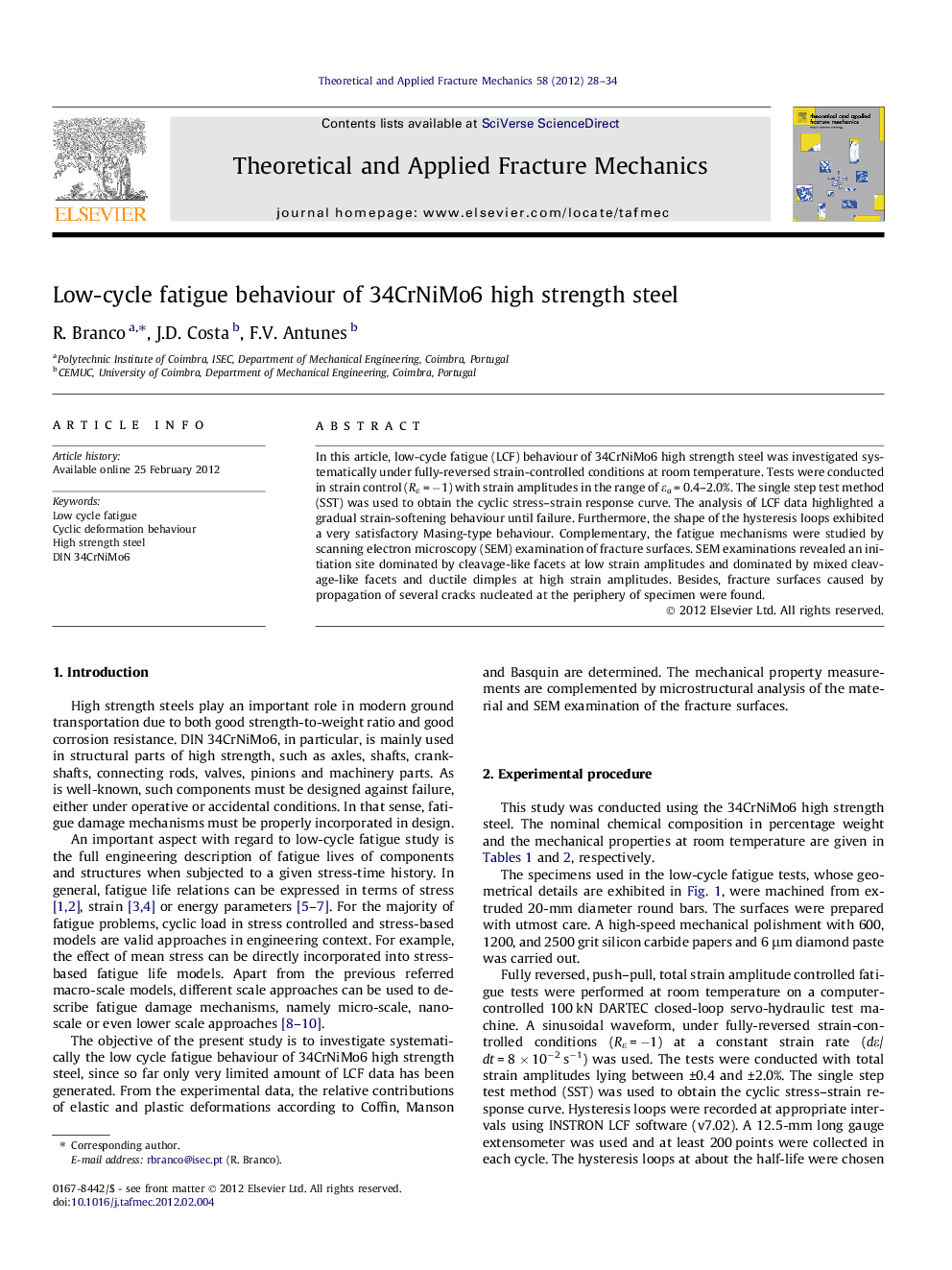| Article ID | Journal | Published Year | Pages | File Type |
|---|---|---|---|---|
| 807188 | Theoretical and Applied Fracture Mechanics | 2012 | 7 Pages |
In this article, low-cycle fatigue (LCF) behaviour of 34CrNiMo6 high strength steel was investigated systematically under fully-reversed strain-controlled conditions at room temperature. Tests were conducted in strain control (Rε = −1) with strain amplitudes in the range of εa = 0.4–2.0%. The single step test method (SST) was used to obtain the cyclic stress–strain response curve. The analysis of LCF data highlighted a gradual strain-softening behaviour until failure. Furthermore, the shape of the hysteresis loops exhibited a very satisfactory Masing-type behaviour. Complementary, the fatigue mechanisms were studied by scanning electron microscopy (SEM) examination of fracture surfaces. SEM examinations revealed an initiation site dominated by cleavage-like facets at low strain amplitudes and dominated by mixed cleavage-like facets and ductile dimples at high strain amplitudes. Besides, fracture surfaces caused by propagation of several cracks nucleated at the periphery of specimen were found.
